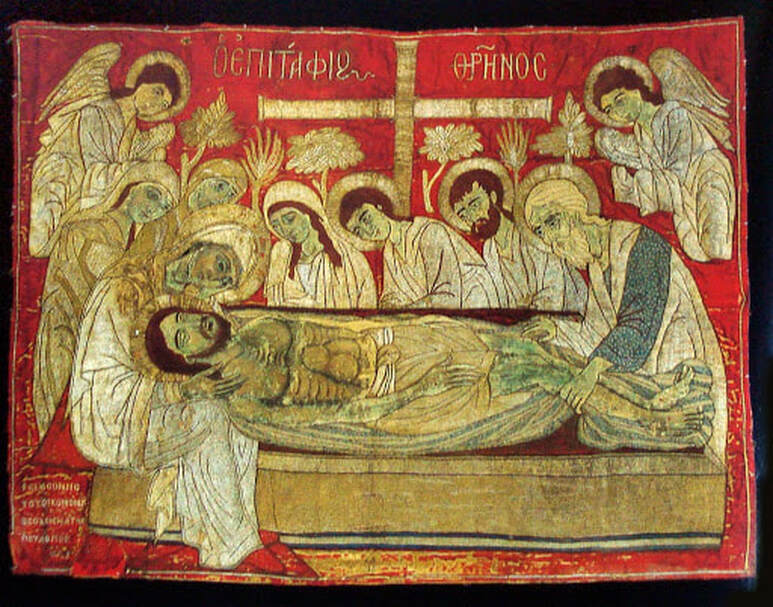|
Good Friday afternoon - Apokathelosis This is the Vespers of Good Friday. It is also called the Apokathelosis – or “unnailing from the cross.” We remember that at this time, Christ “gave up His Spirit.” During the service, the icon of Christ is taken down from the cross and wrapped in a white cloth, which symbolizes His burial garment. The icon of the body is taken into the altar and remains there until after the Feast of the Ascension. This is symbolic because the altar, in particular the Altar Table/Holy Table, is symbolically the tomb of Christ. What comes from the tomb of Christ? Life and the Risen Lord. What comes from the Altar? Life and the Risen Lord in the Holy Communion that is prepared and of which we can partake. As Christ came forth from the tomb giving Life, so does the priest come forth from the altar and offer life when he says, “with the fear of God, faith and love draw near” as he brings forward the Holy Communion for the people. Also, the priest processes with the Epitaphion. The Epitaphion is the icon that is placed in the beautifully decorated wooden tomb. The Epitaphion is not the wooden tomb that is decorated with all of the flowers – that is called the kouvouklion. The priest places the Epitaphion in the kouvouklion at the end of the procession. Theme: salvation granted to us through His “awful Passion, the Cross, and condescension to voluntary entombment in the flesh. Scripture Readings: Prophecies: Exodus 33:11-23, Job 42:12-17, Isaiah 52:13-15, 53:1-12, 54:1, Epistle: 1Corinthians 1:18-2:2 Gospel Reading: Matthew 27:1-38, Luke 23:39-43, Matthew 27:39-54, John 19:31-37, Matthew 27:55-61)
As we learned from earlier in Holy Week, Jesus Christ, though He is God, lowered Himself to our level. That means He lived like we do in every way. He felt pain, sorrow, joy, temptation – the same things we all feel. The only difference is that He is sinless. If He did not die, He could not have truly been like we are. So, He is God, but chooses to allow Himself to be sacrificed so that everyone can attain the Kingdom of Heaven. In other words, He came down to our level in order to raise us up to His level (“God became Man so that Man could become like God” – St. Athanasios). It is a tradition in Orthodox for special icons to be processed. Processions were not meant to take place simply around the church. In fact, in Constantinople, processions throughout the city took place with the context of the Divine Liturgy, because the entire city became the space that is receiving the Body and Blood of the Son of God. When an icon is processed, it is customary for that icon to be put upon a decorated bier, like the kouvouklion, and it will be held up so that people can pass underneath the icon to receive the blessing from Christ or the saint depicted in that icon. There is a procession of the Epitaphion at this service. The Epitaphion is the icon of the entombment of Christ. It is brought out from the altar by the priest/s and processed around the inside of the church. It is then placed in the kouvouklion where it will stay until the end of the evening service, the Lamentations. With Love in Christ, +Fr. Nick Comments are closed.
|
AuthorsMessages written by the clergy of our parish. Archives
May 2021
Categories
All
|
© 2023
Saint Nicholas Greek Orthodox Church
3109 Scio Church Road, Ann Arbor, MI 48103
Phone: (734) 332-8200
Fax: (734) 332-8201
Saint Nicholas Greek Orthodox Church
3109 Scio Church Road, Ann Arbor, MI 48103
Phone: (734) 332-8200
Fax: (734) 332-8201


 RSS Feed
RSS Feed
